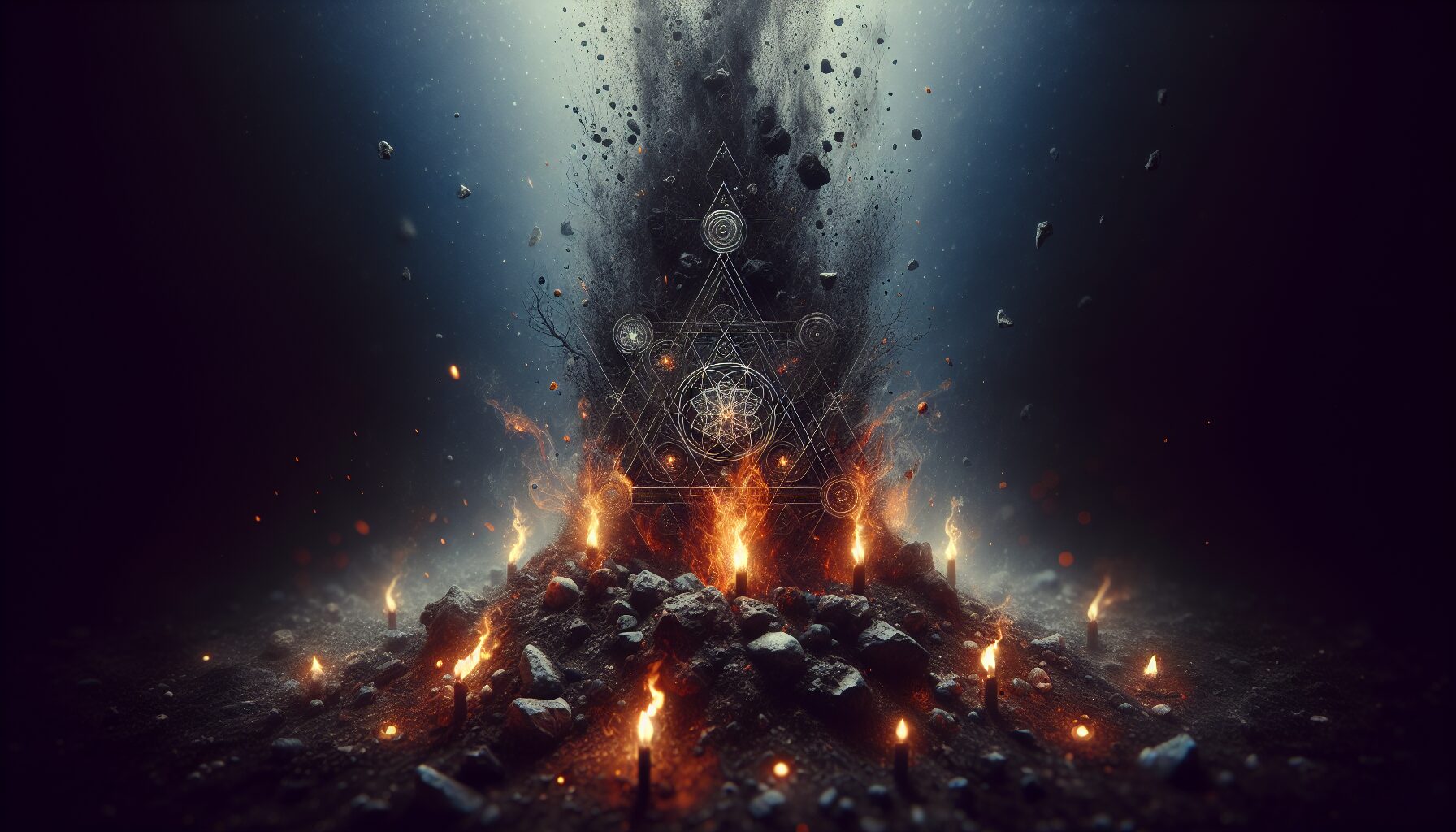Losing a loved one is one of the most profound experiences of human life. Throughout history, communities and cultures have devised rituals to navigate this challenging journey, transforming mourning into a healing process. Among these, the ritual of using ash has emerged as a practice imbued with spiritual significance, offering solace and continuity to the bereaved.
A Tradition Rooted in History
The use of ash in death rituals can be traced back to ancient civilizations. The ancient Greeks and Romans, for instance, practiced cremation, viewing it as a way to return the body to the divine cosmos. In the ashes, they saw a metaphor for life’s cycle of death and rebirth.
“To everything there is a season,
a time to be born and a time to die.”
– Ecclesiastes 3:1-2
The Symbolism and Meaning of Ash
Ashes symbolize both endings and beginnings. This dual nature makes them a powerful symbol of transformation and renewal. In many spiritual practices, ash represents the potential for growth emerging from destruction. It embodies the understanding that from death comes new life, a belief that is central to many Eastern and Western philosophies.
A Modern Take on Ancient Practices
Today, the ritual of ash is experiencing a resurgence as more people seek personalized and meaningful ways to honor their deceased. This modern adaptation often blends tradition with contemporary values, creating rituals that respect both spiritual beliefs and environmental consciousness.
- Eco-Friendly Cremation: As awareness of environmental impacts rises, practices like green cremation are becoming more popular. Instead of traditional methods, these use less energy and reduce harmful emissions.
- Memorial Ashes: Families often choose to incorporate ashes into memorial objects such as jewelry or reef structures that support marine life.
- Scattering Ceremonies: The act of scattering ashes in significant places is another profound ritual. It provides a space for reflection, connection to nature, and a sense of returning the loved one to the earth.
Transforming Grief Through Ritual
Engaging in a ritualized process can be exceptionally cathartic. According to grief therapist Dr. Kevin Skinner, “Rituals provide a structure that helps individuals express and manage their grief in a healthy and communal way.” By participating in these ceremonies, individuals can work through their emotions in a supportive environment, often finding a profound sense of peace.
The Role of Community and Connection
Rituals engage community members, fostering a sense of connection among those affected by the loss. In many cultures, communal aspects of ash rituals help ensure that no one grieves alone. Shared experiences can bridge differences, creating bonds rooted in shared humanity and understanding.
“Grief is the price we pay for love.”
– Queen Elizabeth II
Bringing Closure with Ceremony
Creating a meaningful end to the mourning process is as vital as its beginning. The act of returning ashes to the earth or sea provides closure. It is a symbolic gesture of letting go while celebrating the life that was lived. Many find comfort in the idea that their loved ones become part of the eternal cycle, enriching the world they left behind.
A Personal Journey
Ultimately, the ritual of ash is a deeply personal journey. It is a testament to how we choose to honor those we have lost, reflecting our beliefs, values, and hopes for continued connection. Whether traditional or innovative, these practices offer a path to healing that resonates across time and cultures.
In embracing the ritual of ash, we acknowledge that loss, while painful, is also a powerful catalyst for spiritual growth and transformation.

Comments